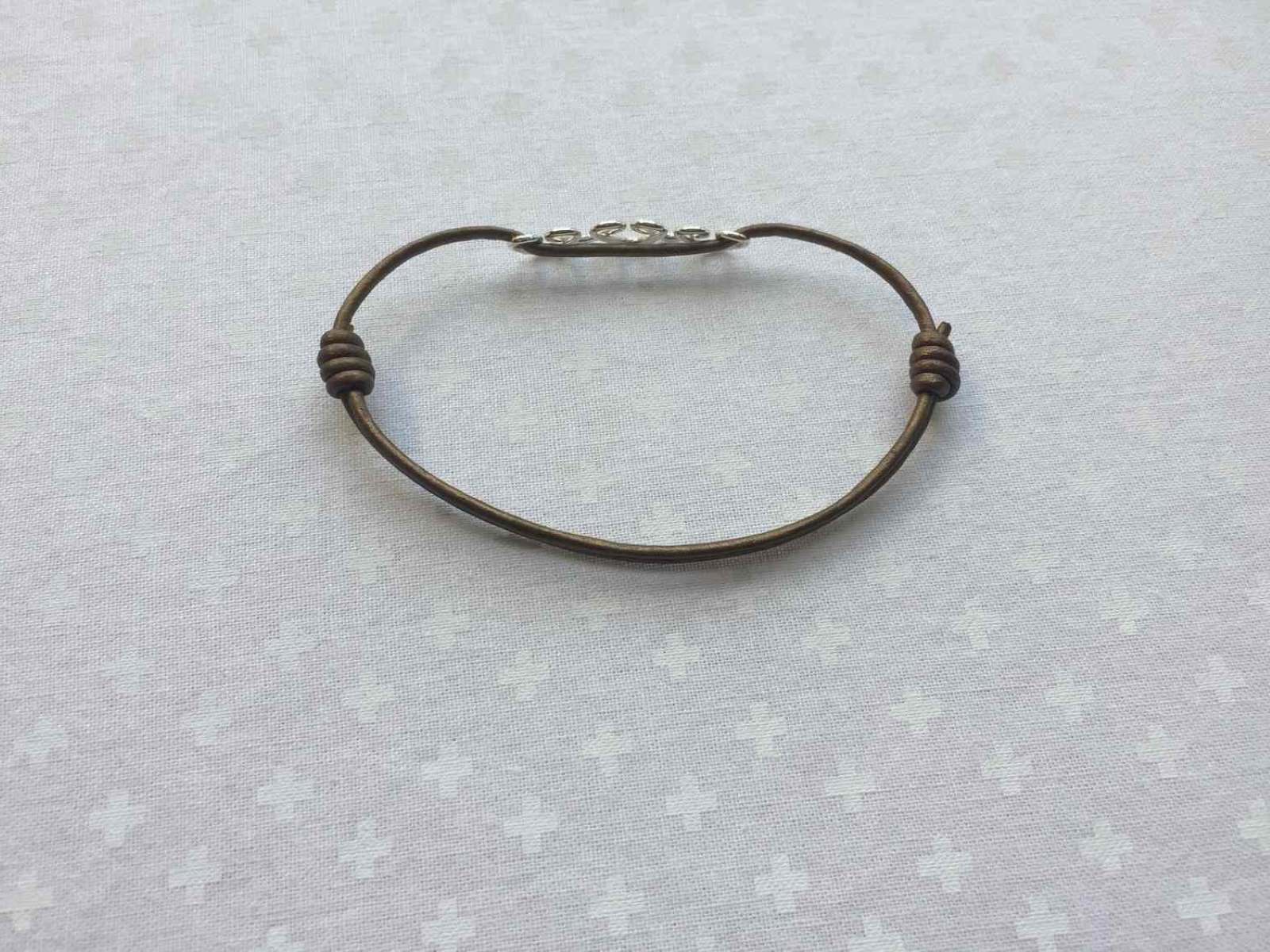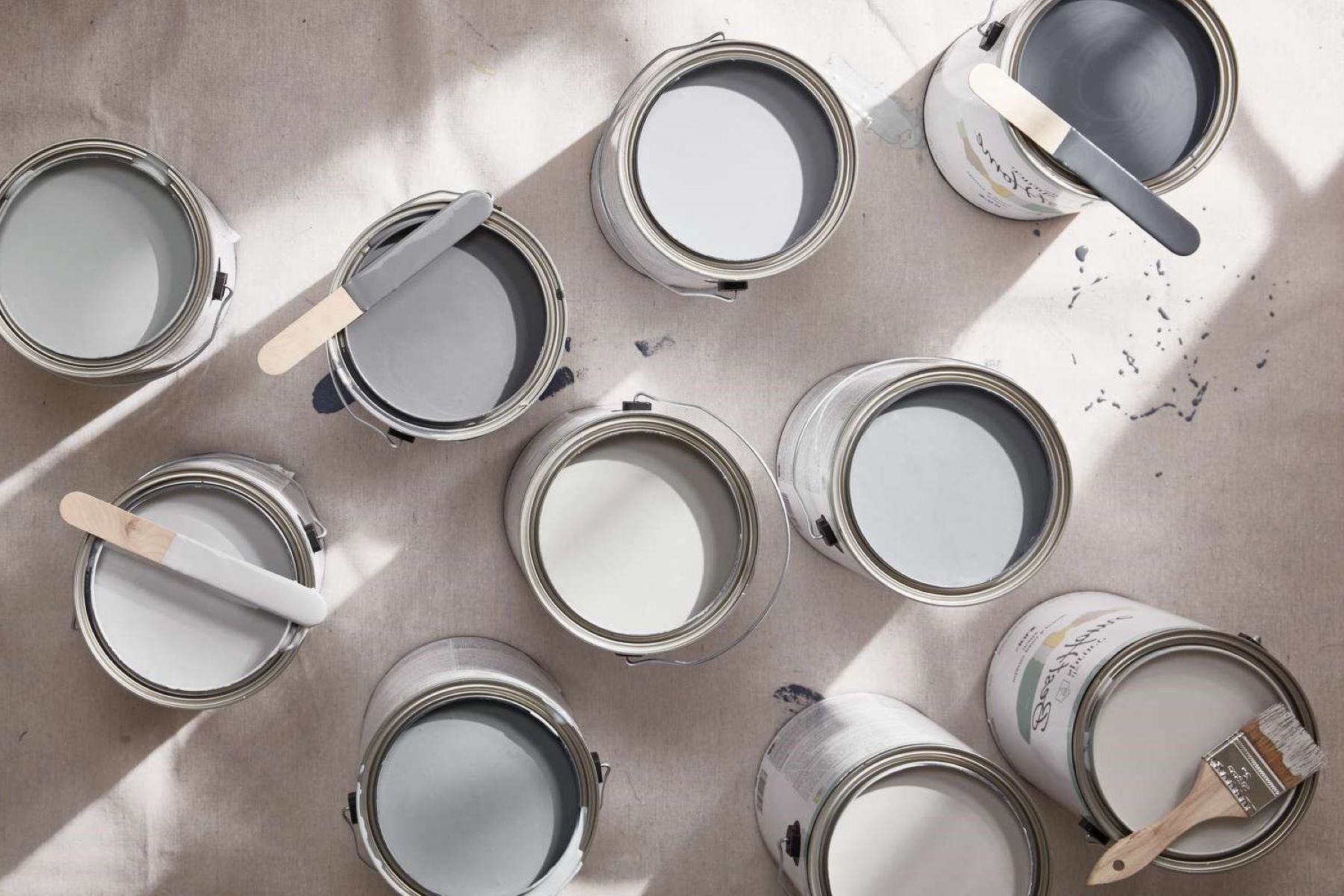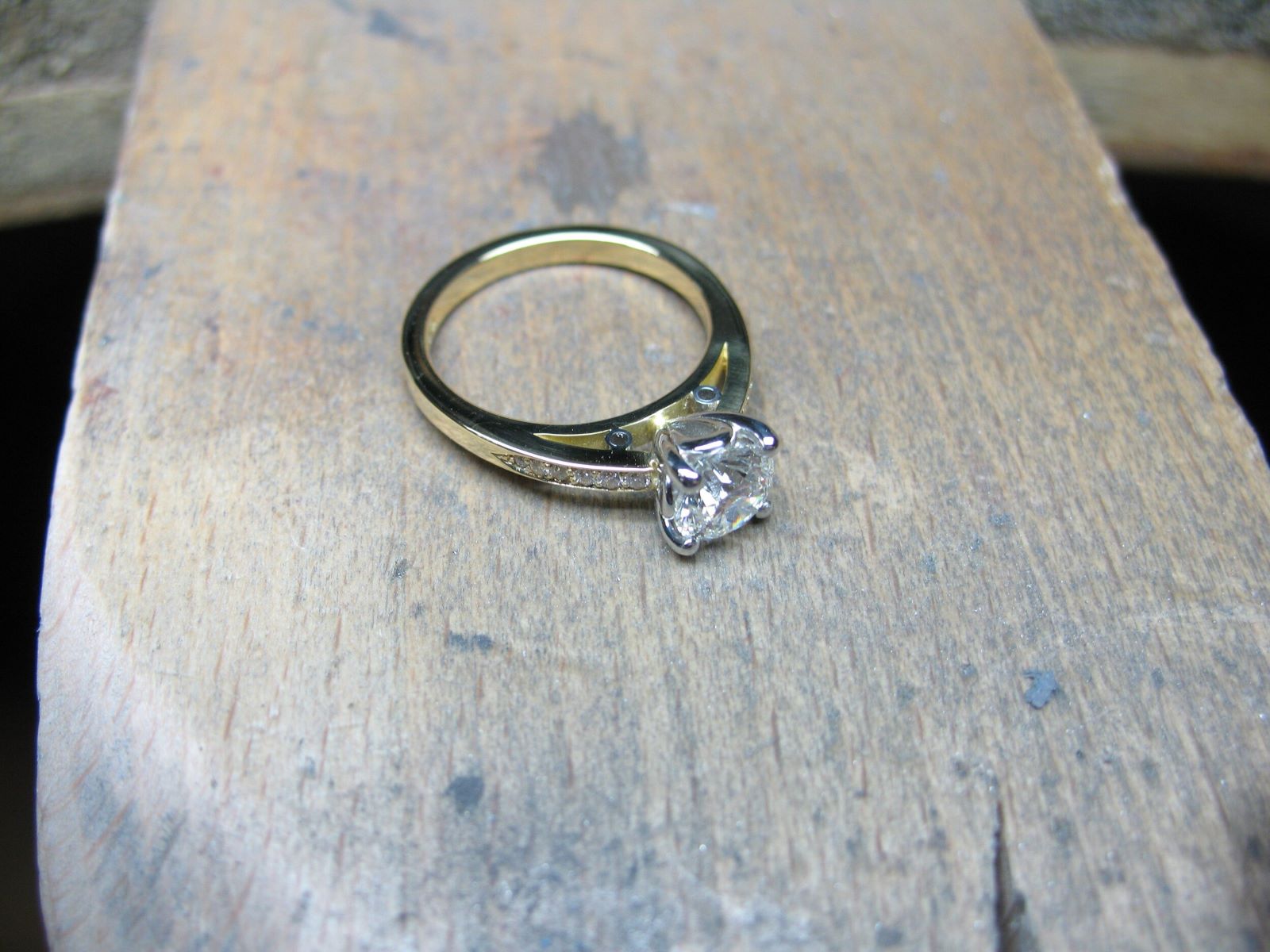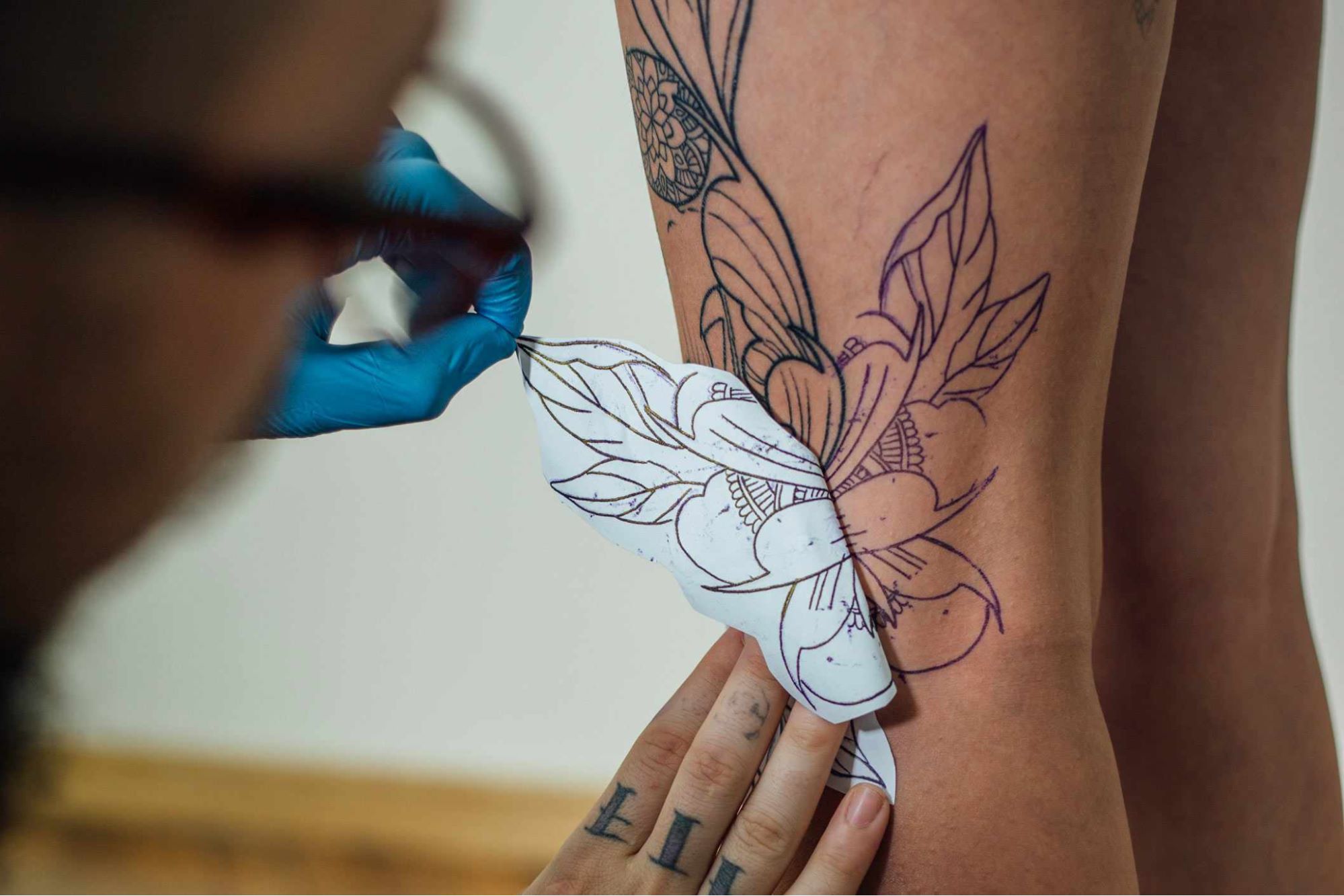Home>Arts and Culture>How To Make An Adjustable Bracelet


Arts and Culture
How To Make An Adjustable Bracelet
Modified: March 13, 2024
Learn how to create your own adjustable bracelet with our step-by-step guide. Explore the art of jewelry making and express your creativity in arts and culture. Start crafting today!
(Many of the links in this article redirect to a specific reviewed product. Your purchase of these products through affiliate links helps to generate commission for Regretless.com, at no extra cost. Learn more)
Table of Contents
Introduction
Making an adjustable bracelet is a creative and fulfilling craft that allows you to customize your own stylish accessories. Whether you're a beginner or an experienced crafter, creating an adjustable bracelet is a fun and rewarding activity that offers endless possibilities for personalization. By following a few simple steps and using basic materials, you can design a bracelet that perfectly fits your wrist and reflects your unique style.
Adjustable bracelets are versatile and practical, as they can be easily customized to fit different wrist sizes and can be worn by people of all ages. This makes them an ideal choice for gifts or personal use. With just a few materials and a little bit of time, you can craft a beautiful and functional accessory that complements any outfit.
In this guide, we will walk you through the process of creating an adjustable bracelet from start to finish. You will learn how to measure and cut the cord, add the clasp, create the adjustable knot, and ensure the perfect fit for your bracelet. Whether you're making a bracelet for yourself or as a thoughtful gift for a friend or family member, this step-by-step tutorial will equip you with the skills and knowledge needed to craft a stunning adjustable bracelet with ease.
So, gather your materials, clear a workspace, and let's dive into the exciting world of bracelet making. Get ready to unleash your creativity and embark on a delightful crafting journey as we guide you through the art of making an adjustable bracelet.
Read more: How To Tie Friendship Bracelets
Materials Needed
To embark on the creative journey of making an adjustable bracelet, you will need a few essential materials that are readily available and easy to work with. These basic supplies will serve as the building blocks for your bracelet-making endeavor, allowing you to unleash your creativity and bring your vision to life. Here's a list of the materials you'll need to get started:
-
Cord or String: Select a durable and visually appealing cord or string that suits your design preferences. Nylon cord, leather cord, or waxed cotton cord are popular choices for adjustable bracelets, offering strength and flexibility to accommodate various wrist sizes.
-
Beads or Charms: Choose an assortment of beads, charms, or decorative elements to embellish your bracelet. Beads come in a wide range of materials, shapes, and colors, allowing you to personalize your design and add a touch of individuality to your creation.
-
Scissors: A pair of sharp scissors is essential for cutting the cord to the desired length and ensuring clean, precise cuts. Opt for scissors that are comfortable to hold and capable of cleanly severing the chosen cord material.
-
Clasp: Select a suitable clasp that complements the style of your bracelet and provides a secure closure. Lobster clasps, toggle clasps, and magnetic clasps are popular choices, offering both functionality and aesthetic appeal.
-
Ruler or Measuring Tape: A ruler or measuring tape will help you accurately measure the length of the cord, ensuring a proper fit for the adjustable bracelet. Precision in measurement is crucial to achieving a bracelet that comfortably conforms to the wearer's wrist.
-
Lighter or Glue (Optional): Depending on the type of cord chosen, a lighter or glue may be used to prevent fraying and secure the ends of the cord. This step adds a professional finish to the bracelet and enhances its durability.
-
Bead Reamer (Optional): If you are working with beads that have small holes or rough edges, a bead reamer can be handy for enlarging holes and smoothing rough surfaces, ensuring that the beads slide smoothly onto the cord.
Gathering these materials will set the stage for an enjoyable and fulfilling bracelet-making experience. With these foundational supplies at your disposal, you are ready to proceed to the next steps of creating a stunning adjustable bracelet that reflects your personal style and creativity.
Step 1: Measure and Cut the Cord
The first step in creating an adjustable bracelet is to measure and cut the cord to the desired length. This crucial step sets the foundation for the bracelet's fit and ensures that it comfortably accommodates the wearer's wrist. To begin, gather your chosen cord or string, a ruler or measuring tape, and a pair of sharp scissors.
Start by determining the ideal length for your adjustable bracelet. If the bracelet is intended for personal use, wrap the cord around your wrist and adjust it to the desired fit. For a gift or if the bracelet's recipient is not present, a standard wrist measurement of approximately 7 inches (17.78 cm) can serve as a useful guideline. However, it's essential to consider the thickness of the cord and the size of the beads or charms when determining the length.
Once you have established the desired length, carefully cut the cord using the sharp scissors. It's important to make a clean and precise cut to ensure that the bracelet's ends are even and neat. If you are using a thicker cord or a material that is prone to fraying, consider using a lighter or a small amount of glue to seal the ends and prevent unraveling.
After cutting the cord to the appropriate length and securing the ends, you have successfully completed the first step in the bracelet-making process. The measured and cut cord serves as the foundational element for your adjustable bracelet, laying the groundwork for the subsequent steps of adding the clasp, creating the adjustable knot, and perfecting the fit.
By meticulously measuring and cutting the cord, you have taken a significant stride toward crafting a personalized and well-fitting adjustable bracelet. This initial step sets the stage for the creative journey ahead, allowing you to move forward with confidence and precision as you bring your bracelet design to fruition. With the cord prepared and ready for the next phase, you are poised to embark on the next steps of assembling and customizing your adjustable bracelet.
Step 2: Add the Clasp
Adding the clasp is a pivotal step in the creation of an adjustable bracelet, as it not only provides a secure closure but also contributes to the overall aesthetic appeal of the finished piece. To begin this step, gather the cord with the cut ends, the chosen clasp, and any additional findings or connectors that may be required for attaching the clasp to the cord.
Start by threading one end of the cord through the loop or opening of the clasp, ensuring that there is an adequate length of cord to work with. Depending on the type of clasp chosen, you may need to use additional findings such as jump rings or crimp beads to securely attach the clasp to the cord. These findings serve as connectors that facilitate the attachment process and enhance the durability of the bracelet.
Once the cord is threaded through the clasp and any necessary findings, carefully secure the attachment by tying a secure knot. For added reinforcement, consider applying a small amount of jewelry glue to the knot to ensure that it remains firmly in place. This extra step can provide additional strength and stability to the connection, minimizing the risk of the clasp coming loose during wear.
After securing one end of the cord to the clasp, repeat the process on the opposite end to attach the remaining portion of the cord to the other side of the clasp. Pay close attention to the alignment and tension of the cord, ensuring that it is evenly threaded through the clasp and that the bracelet maintains a symmetrical and balanced appearance.
Upon successfully attaching both ends of the cord to the clasp, take a moment to inspect the connections and make any necessary adjustments to ensure that the clasp is securely fastened and that the bracelet exhibits a professional and polished finish. This meticulous attention to detail will contribute to the overall quality and longevity of the adjustable bracelet, enhancing its functionality and visual appeal.
With the clasp securely in place and the cord expertly attached, you have completed a significant phase in the creation of the adjustable bracelet. The addition of the clasp marks a pivotal milestone in the bracelet-making process, bringing you one step closer to crafting a stunning and functional accessory that embodies your unique style and craftsmanship.
Step 3: Create the Adjustable Knot
The creation of the adjustable knot is a crucial and defining step in the process of making an adjustable bracelet. This knot serves as the mechanism that allows the wearer to easily adjust the bracelet's fit, ensuring comfort and versatility. To embark on this step, gather the prepared cord with the attached clasp, and prepare to master the art of tying the adjustable knot.
Begin by identifying the center of the cord, as this will serve as the focal point for forming the adjustable knot. With the cord positioned evenly, proceed to create a simple overhand knot at the center. This initial knot will lay the foundation for the adjustable element of the bracelet, setting the stage for the subsequent steps in the knot-tying process.
Following the creation of the overhand knot, it's time to introduce the adjustable component that will enable the bracelet to expand and contract effortlessly. To achieve this, carefully form two additional knots using the loose ends of the cord. These knots should flank the initial overhand knot, creating a symmetrical and balanced appearance while allowing for smooth adjustability.
As you tie the additional knots, maintain a consistent tension to ensure that the bracelet retains its flexibility without compromising on durability. The spacing between the knots should be sufficient to accommodate the desired range of adjustability, allowing the wearer to effortlessly modify the bracelet's size to achieve a comfortable and secure fit.
Once the knots are securely in place, take a moment to test the adjustability of the bracelet by gently sliding the knots along the cord. This practical assessment will allow you to fine-tune the positioning of the knots, ensuring that the adjustable mechanism functions seamlessly and that the bracelet can be effortlessly resized to suit different wrist sizes.
As you perfect the placement of the knots, pay attention to the overall aesthetic of the bracelet, ensuring that the adjustable element harmonizes with the design and complements the chosen beads or charms. This attention to detail will elevate the bracelet's visual appeal while enhancing its functionality, resulting in a well-crafted accessory that seamlessly blends style and practicality.
With the adjustable knot expertly tied and the bracelet's adjustability confirmed, you have successfully navigated a pivotal phase in the bracelet-making process. The creation of the adjustable knot represents a significant achievement, as it empowers the wearer to personalize the fit of the bracelet, ensuring both comfort and style. This essential element sets the stage for the final step of testing and adjusting the bracelet's fit, bringing you closer to the completion of your beautifully crafted adjustable bracelet.
Read more: How To Adjust Watch Band
Step 4: Test and Adjust the Fit
With the adjustable knot securely in place, it's time to embark on the final step of testing and adjusting the fit of the adjustable bracelet. This pivotal phase ensures that the bracelet conforms comfortably to the wearer's wrist, allowing for effortless wear and a personalized fit. To begin this step, gather the completed adjustable bracelet and prepare to fine-tune its size to achieve the perfect fit.
Start by gently sliding the knots along the cord to expand the bracelet to its maximum size. This initial adjustment allows you to assess the full range of adjustability and ensures that the bracelet can accommodate a variety of wrist sizes. By testing the bracelet's maximum expansion, you can verify its flexibility and confirm that it can be comfortably worn by individuals with larger wrists.
Following the assessment of the bracelet's maximum size, gradually contract the adjustable knots to reduce the bracelet to its smallest size. This step enables you to evaluate the bracelet's ability to adapt to smaller wrist sizes, ensuring that it remains snug and secure without compromising comfort. By testing the bracelet's minimum size, you can ascertain its versatility and confirm that it can be comfortably worn by individuals with petite wrists.
As you navigate through the process of expanding and contracting the bracelet, pay close attention to the smoothness of the adjustability and the overall comfort of the fit. Ensure that the knots move effortlessly along the cord, allowing for seamless adjustments without causing any discomfort or resistance. This practical assessment will provide valuable insights into the bracelet's adaptability and its ability to conform to different wrist sizes with ease.
Once you have tested the bracelet's adjustability and confirmed its ability to accommodate various wrist sizes, take a moment to assess the overall fit on your wrist. Ensure that the bracelet rests comfortably and securely, striking a balance between a snug fit and unrestricted movement. By evaluating the bracelet's fit firsthand, you can make any necessary adjustments to tailor it to your specific preferences.
With the fit of the adjustable bracelet meticulously evaluated and fine-tuned, you have successfully completed the testing and adjustment phase, ensuring that the bracelet offers a personalized and comfortable fit. This final step marks the culmination of your bracelet-making journey, resulting in a beautifully crafted accessory that embodies both style and functionality.
Conclusion
In conclusion, the art of making an adjustable bracelet is a delightful and rewarding endeavor that allows individuals to express their creativity while crafting personalized accessories. Throughout this comprehensive guide, we have explored the step-by-step process of creating an adjustable bracelet, from measuring and cutting the cord to adding the clasp, tying the adjustable knot, and testing the bracelet's fit. By following these detailed instructions, crafters of all skill levels can embark on a fulfilling journey of bracelet making, resulting in stunning and functional accessories that reflect their unique style and craftsmanship.
The process of making an adjustable bracelet not only involves technical steps but also encompasses a sense of artistry and personalization. From selecting the cord and beads to tying the adjustable knot, each decision and action contribute to the creation of a bracelet that resonates with the wearer's individuality. The ability to customize the bracelet's fit adds a practical dimension to its design, ensuring that it can be comfortably worn by individuals of varying wrist sizes.
Crafting an adjustable bracelet also offers a sense of accomplishment and satisfaction, as each completed piece represents a fusion of creativity and skill. Whether the bracelet is intended for personal wear or as a thoughtful gift for a loved one, the process of making it fosters a connection between the crafter and the finished creation, infusing it with meaning and sentiment.
Furthermore, the versatility of adjustable bracelets makes them a popular choice for accessorizing a wide range of outfits and occasions. Their ability to adapt to different wrist sizes and styles makes them a versatile and practical accessory, suitable for daily wear or special events. Additionally, the incorporation of beads, charms, and decorative elements allows for endless customization, enabling crafters to tailor each bracelet to suit their preferences and aesthetic sensibilities.
In essence, the art of making an adjustable bracelet transcends the act of crafting a piece of jewelry; it embodies self-expression, creativity, and the joy of creating something beautiful with one's own hands. By mastering the techniques outlined in this guide and infusing each bracelet with personal flair, crafters can embark on a fulfilling and inspiring journey of bracelet making, resulting in unique and cherished accessories that reflect their passion for creativity and self-expression.














